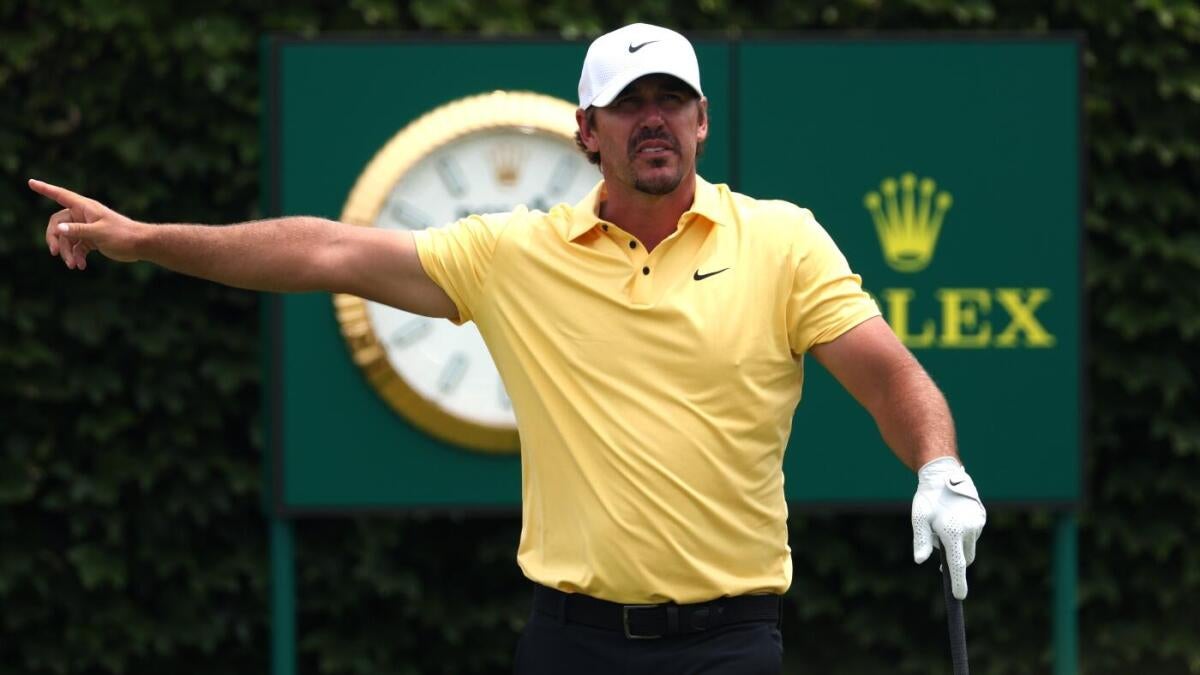Brooks Koepka’s withdrawal from the 2025 LIV Golf Dallas event, marked by a dramatic outburst that included smashing a tee box marker, offers a revealing snapshot of a high-profile athlete grappling with performance pressures, physical setbacks, and the evolving dynamics of professional golf. The incident, captured on video and widely circulated, symbolized the intense internal battle between expectation and reality that many elite athletes face.
The Incident: Frustration Boiling Over
During the first round at LIV Golf Dallas, Koepka’s visible frustration mounted rapidly. After a disappointing drive on the ninth hole—part of a difficult start leaving him six over par—he aggressively slammed his club into the ground, then broke a tee box marker in an outburst of anger. This moment, captured on video and widely circulated, symbolized the intense internal battle between expectation and reality that many elite athletes face.
His meltdown was not just a simple lapse of composure; it unfolded within a larger context of personal and professional challenges. Following this episode, Koepka bogeyed several subsequent holes before ultimately withdrawing from the tournament, officially citing illness as the reason. The incident raised questions about the mental and emotional toll of professional golf, particularly in high-stakes environments like LIV Golf, where the pressure to perform is immense.
Performance and Health Challenges
Koepka’s struggle in Dallas follows a broader pattern of recent inconsistency on the course. Though a five-time Major champion with wins at the PGA Championship and U.S. Open, his 2025 season has shown signs of volatility. Reports indicate he had been relatively inactive since his prior LIV appearances and had to withdraw or miss other key tournaments due to illness or injury.
In particular, physical ailments such as knee and wrist injuries have hampered his performance in recent years. These health issues, combined with bouts of illness, affect not only physical capability but also mental resilience, which can be crucial in maintaining competitive focus under pressure. Koepka’s history of injuries suggests that his body may be struggling to keep up with the demands of elite competition, a reality that many athletes face as they age and accumulate wear and tear.
The Context of LIV Golf and Professional Golf Dynamics
Koepka’s withdrawal and visible frustration highlight wider tensions within the evolving landscape of professional golf. The LIV Golf series, backed by substantial funding and offering guaranteed money, represents a disruptive force compared to traditional tours like the PGA. Koepka’s move to LIV Golf came after years of public skepticism about such career moves, underscoring a complicated relationship between player loyalty, career strategy, and financial incentives.
Within LIV events, expectations are high, with players competing in aggressive formats and under different pressures than traditional tours. Koepka’s team, Smash GC, itself suggests a combative attitude, and his outburst on the course fits a pattern of passionate competitiveness strained by the demands of maintaining elite performance. The transition to LIV Golf has also brought new challenges, including adapting to different formats and dealing with the scrutiny that comes with being part of a controversial league.
Emotional Toll and Public Scrutiny
The emotional element of Koepka’s actions cannot be underestimated. His meltdown captured public and media attention, symbolizing the toll that professional sports can take on athletes dealing with high expectations, transitions between tours, injuries, and external distractions. Notably, Koepka has also faced heckling and criticism from fans regarding his LIV Golf affiliation, adding to the psychological load.
Moreover, his behavior provokes discussion about athlete mental health and the pressures in golf, often seen as a composed and gentlemanly sport. Such incidents expose the human side of competitors, reminding audiences and stakeholders that frustration, setback, and withdrawal are part of the athlete’s journey. The public scrutiny that comes with being a high-profile athlete can exacerbate these challenges, making it difficult for players to manage their emotions and maintain focus.
What This Means Going Forward
Koepka’s withdrawal from LIV Golf Dallas is not just an isolated event but part of a broader narrative about his career trajectory and professional golf’s shifting scene. While he cited illness as the official reason for leaving, the circumstances indicate a complex intersection of physical health, mental state, and the competitive environment.
His team replaced him promptly with Luis Carrera, signaling LIV Golf’s capacity to adapt quickly, yet the incident leaves open questions about Koepka’s future performance and role in the circuit. There is speculation about his potential return later in the season, but observers will be watching closely for signs of renewed form and composure. The incident also raises broader questions about the sustainability of elite performance in the face of physical and mental challenges.
Conclusion: Beyond the Tee Marker Smash
Brooks Koepka’s dramatic exit from LIV Golf Dallas serves as a powerful illustration of the intersecting pressures that elite golfers face today. It’s a moment where physical challenges, mental frustration, career decisions, and public scrutiny collided in a very public display of vulnerability. While the smashed tee box marker grabbed headlines, the deeper story is about resilience and adaptation amid change.
For Koepka, the path ahead demands managing health, refining focus, and navigating the complexities of modern professional golf circuits. For fans and analysts, it’s a reminder that even the most decorated champions wrestle with setbacks, and that every stroke, swing, and reaction reveals layers beneath the surface of golf’s polished exterior. The incident underscores the importance of mental health support and the need for athletes to have strategies in place to cope with the pressures of professional sports.












